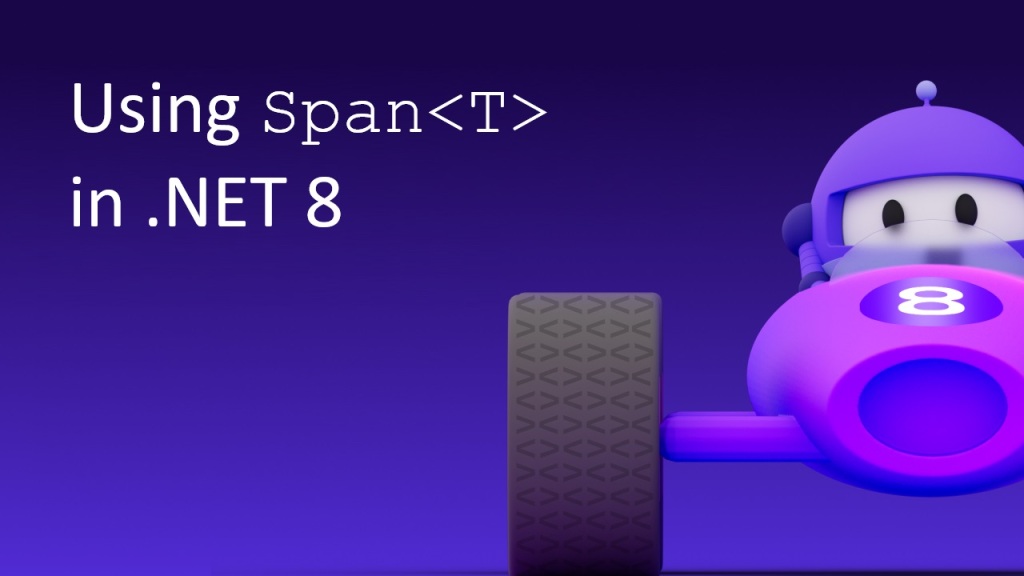Performance updates using Span<T> in .NET 8

There is a file parser that I used in one of my hobby projects that was not optimized and consuming a lot of memory.
The file in question a list of dates and prices per line.
...
2024-04-02 1266.1963
2024-04-03 1266.5501
2024-04-04 1266.8667
2024-04-05 1264.6353
2024-04-08 1265.3408
2024-04-10 1266.0959
...
The original source code below using LINQ
return (T)data.Split(new char[] { '\r', '\n' })
.Where(a => !string.IsNullOrWhiteSpace(a)).Select(line => line.Split(' '))
.Select(x => new NAV(DateTime.Parse(x[0]), double.Parse(x[1]))).AsEnumerable();
In the above code, data from the file is split for newline characters, followed by spiltting the line by space. Then parse the two tokens as DateTime and double.
My first attempt at improving performance with AsParallel resulted in small improvement but worse memory consumption
return (T)data.Split(new char[] { '\r', '\n' }).AsParallel()
.Where(a => !string.IsNullOrWhiteSpace(a)).Select(line => line.Split(' ')).AsParallel()
.Select(x => new NAV(DateTime.Parse(x[0]), double.Parse(x[1]))).AsEnumerable();
| Method | Mean | Error | StdDev | Gen0 | Gen1 | Allocated |
|---|---|---|---|---|---|---|
| DeserializeAsParallel | 457.7 us | 6.59 us | 5.84 us | 89.8438 | 42.9688 | 710.77 KB |
| DeserializeSingleThread | 518.5 us | 7.10 us | 5.93 us | 67.3828 | 25.3906 | 555.13 KB |
Now decided to starting think diffrently and figured out .NET 8 added support for Split over a Span<T>. Performance improvements in ASP.NET Core 8
Let's get into the low-level details. First get Span from string with AsSpan() extension.
-
Allocate
Span<Range>rows with the number ofnewlinesin thecontent.var content = data.AsSpan(); Span<Range> rows = stackalloc Range[content.Count(['\r', '\n']) + 1]; -
Use the new
Splitmethod to populate therowswith data.int ReadOnlySpan<char>.Split(Span<Range> destination, ReadOnlySpan<char> separator)var count = content.Split(rows, ['\r', '\n']);A quick check on the
rowsin debug reveals, its populated with start and end indexes of each row.[0] [Range]:{0..18} [1] [Range]:{20..38} [2] [Range]:{40..58} [3] [Range]:{60..78} [4] [Range]:{80..98} [5] [Range]:{100..118} [6] [Range]:{120..138} [7] [Range]:{140..158} [8] [Range]:{160..177} [9] [Range]:{179..197}Note:
content.Count()andcountvariable from the Split should be the same. -
Few mode Range allocations to store the tokens per line and the actual results
Span<Range> tokens = stackalloc Range[2]; Span<NAV> results = stackalloc NAV[count];Span<Range> tokensuses a length of2as there would only be two data points,DateTimeanddouble.Span<NAV> resultswould be the same as the number of rows in the file, hence usecount
-
Now iterate over every line using a traditional
forloop.rows[i]will point to theRangeof the current line, whilecontent[Range]will give us the actualReadOnlySpan<char>for the current line.for (int i = 0; i < count; i++) { var currentLine = content[rows[i]]; }Visualization of
currentLine"2006-04-01 10.5745" [0] [char]:50 '2' [1] [char]:48 '0' [2] [char]:48 '0' [3] [char]:54 '6' [4] [char]:45 '-' [5] [char]:48 '0' [6] [char]:52 '4' [7] [char]:45 '-' [8] [char]:48 '0' [9] [char]:49 '1' [10] [char]:32 ' ' [11] [char]:49 '1' [12] [char]:48 '0' [13] [char]:46 '.' [14] [char]:53 '5' [15] [char]:55 '7' [16] [char]:52 '4' [17] [char]:53 '5' -
Next up is again using
Splitto get thetokens.Use
Splitagain to populateSpan<Range> tokensand parse data using it.currentLine.Split(tokens, [' ']); DateTime.Parse(currentLine[tokens[0]]); // "2006-04-01" double.Parse(currentLine[tokens[1]]); // "10.5745" -
The entire code below, with some optimizations added to collect the results.
var content = data.AsSpan(); Span<Range> rows = stackalloc Range[content.Count(['\r', '\n']) + 1]; var count = content.Split(rows, ['\r', '\n']); Span<Range> tokens = stackalloc Range[2]; Span<NAV> results = stackalloc NAV[count]; int j = 0; for (int i = 0; i < count; i++) { var currentLine = content[rows[i]]; if (currentLine.IsWhiteSpace()) continue; currentLine.Split(tokens, [' ']); results[j] = new NAV(DateTime.Parse(currentLine[tokens[0]]), double.Parse(currentLine[tokens[1]])); j++; } return results[0..j].ToArray(); -
Using
Span<T>method not is better than the optimizations done earlier withParallel, it significantly uses less memory
| Method | Mean | Error | StdDev | Gen0 | Gen1 | Allocated |
|---|---|---|---|---|---|---|
| DeserializeAsParallel | 457.7 us | 6.59 us | 5.84 us | 89.8438 | 42.9688 | 710.77 KB |
| DeserializeSingleThread | 518.5 us | 7.10 us | 5.93 us | 67.3828 | 25.3906 | 555.13 KB |
| DeserializeWithSpan | 456.3 us | 2.46 us | 1.92 us | 8.3008 | - | 70.11 KB |
The memory allocations have dropped to just 70 KB about a tenth of the next best method DeserializeAsParallel.
Running the same benchmark on a larger file (122 KB vs 38 KB in previous run), provides more data. DeserializeWithSpan is still faster with very less memory allocations.
| Method | Mean | Error | StdDev | Gen0 | Gen1 | Gen2 | Allocated |
|---|---|---|---|---|---|---|---|
| DeserializeAsParallel | 1.350 ms | 0.0158 ms | 0.0148 ms | 261.7188 | 144.5313 | 85.9375 | 1787.88 KB |
| DeserializeSingleThread | 1.782 ms | 0.0274 ms | 0.0228 ms | 175.7813 | 87.8906 | 87.8906 | 1500.08 KB |
| DeserializeWithSpan | 1.302 ms | 0.0068 ms | 0.0057 ms | 58.5938 | 58.5938 | 58.5938 | 183.12 KB |
Concluding
Overall this optimization increased the throughput of web requests that were getting stalled in this slower hotpath.
Further optimization is possible to limit the number of lines read by using date filters, thats for another time!
Discussion
For any queries or feedback, please start a new discussion on GitHub Discussions or at Twitter @shubhan3009.